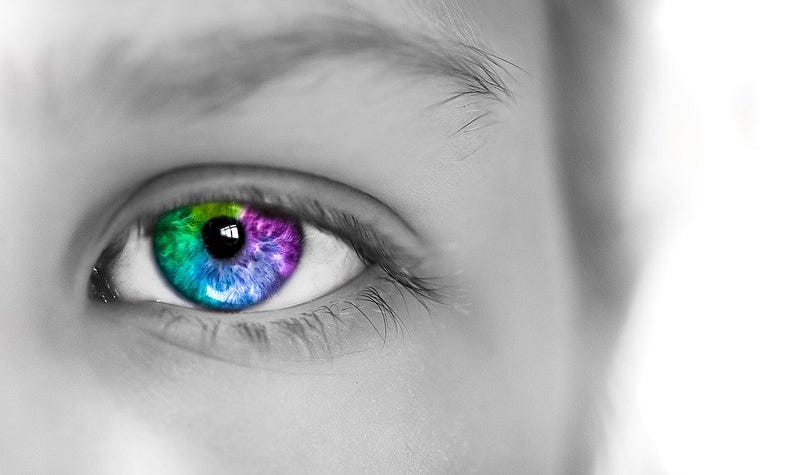Colored Contacts: Are Costumes Worth the Consequences?
By Spurti Vemuri, Behavioral Neuroscience, 2021

This article was originally published as part of Issue 34: Color.
Although shape-shifting and mind-reading are farfetched characteristics for a human being to have, changing one’s eye color is not so impossible. Invented in the late 1800s, contacts were created to correct vision problems without the hassles that come with wearing spectacles. Since then, the role of contacts has grown from one of solely prescription use to one of recreation, in the form of colored contact lenses.
While there are prescription contact lenses that come in different colors, the real concern is over-the-counter contact lenses — usually used as accessories to costumes. Unlike the lenses provided by an ophthalmologist, these cheap, non-sterile alternatives can be the cause of serious eye damage.
Colored contact lenses are not one-size-fits-all. According to the American Academy of Ophthalmology, wearing ill-fitting colored contact lenses, like those purchased by hundreds of people for Halloween celebrations, is hazardous to the safety of one’s eyes. For example, a non-prescription lens can cause corneal abrasions and painful bacterial infections.
Colored contact lenses are not one-size-fits-all.
A case study of a young teen that bought over the counter colored contacts from a gas station showed how dangerous they can be. The seventeen-year-old, Julian Hamlin, lost vision in one of his eyes and had to undergo many extensive corrective surgeries. Hamlin and many others like him have risked their vision out of ignorance.
So the next time you want to dress up as something spooky and purchase colored contact lenses from a costume store, ask yourself whether or not fashion trumps vision.